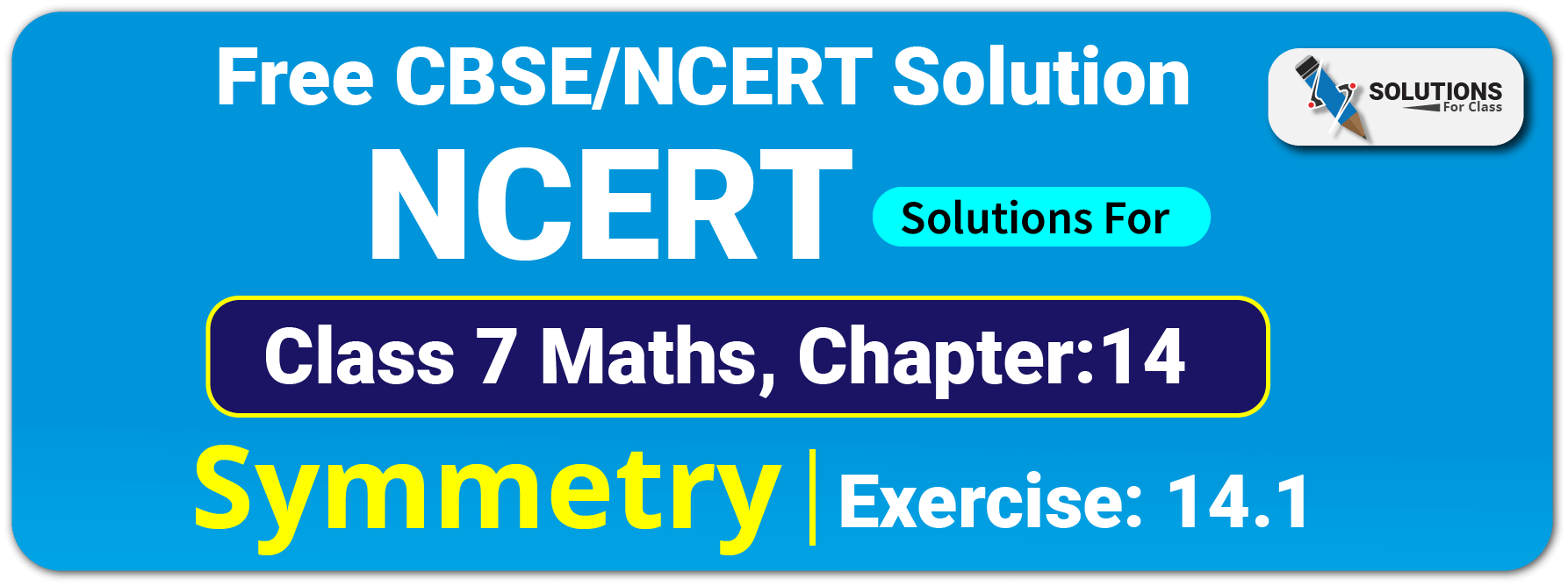
Table of Contents
ToggleClass 7, Maths, Chapter 14, Exercise 14.1 Solutions
Q.1. Copy the figures with punched holes and find the axes of symmetry for the following:
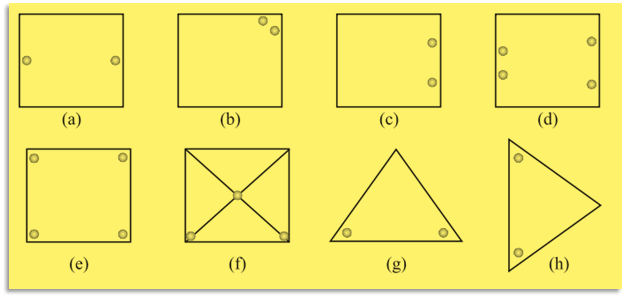

Ans:
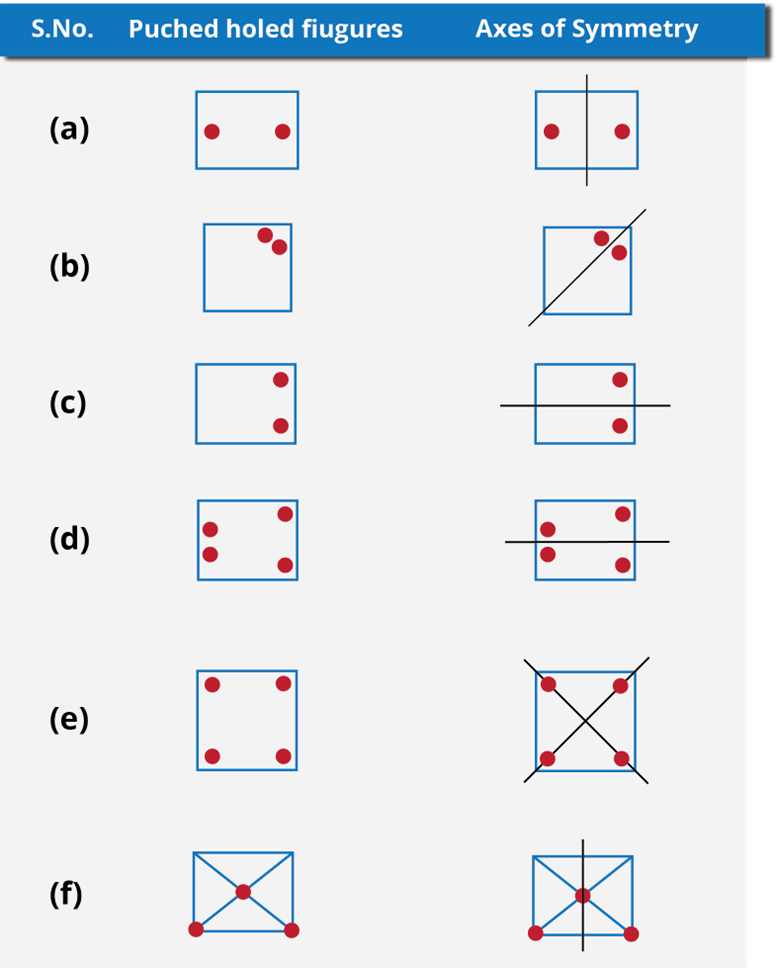
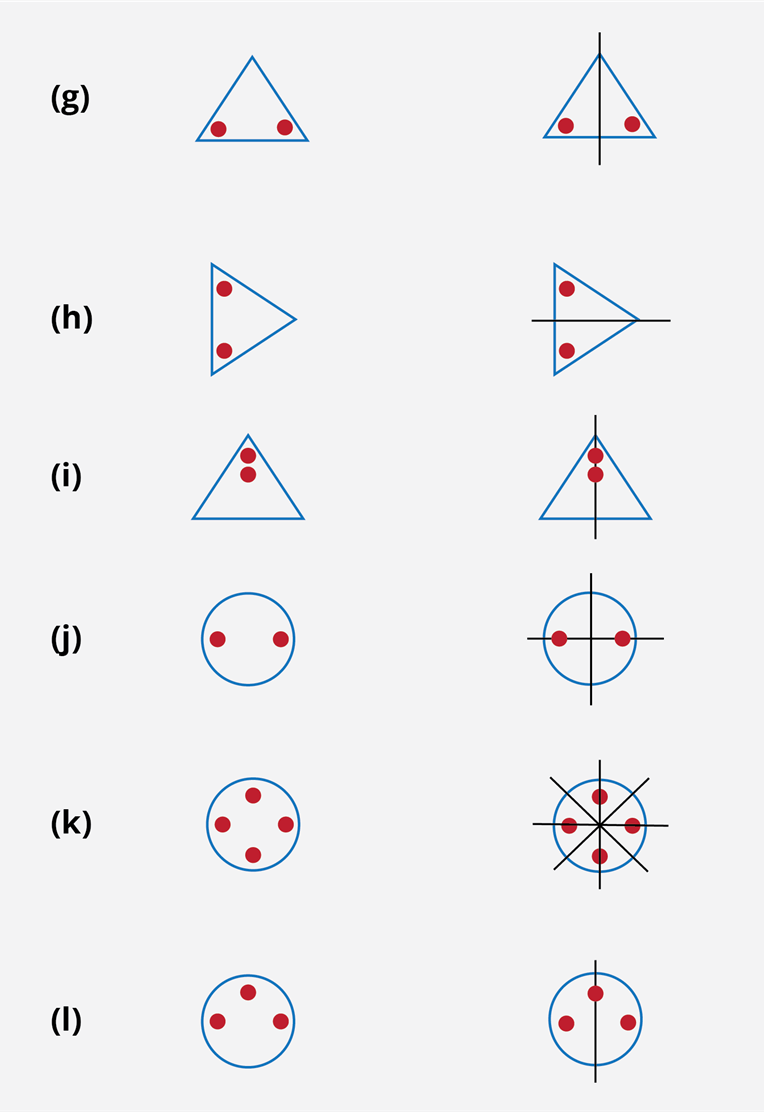
Q.2. Given the line(s) of symmetry, find the other hole(s):

Ans:

Q.3. In the following figures, the mirror line (i.e., the line of symmetry) is given as a dotted line. Complete each figure performing reflection in the dotted (mirror) line. (You might perhaps place a mirror along the dotted line and look into the mirror for the image). Are you able to recall the name of the figure you complete?
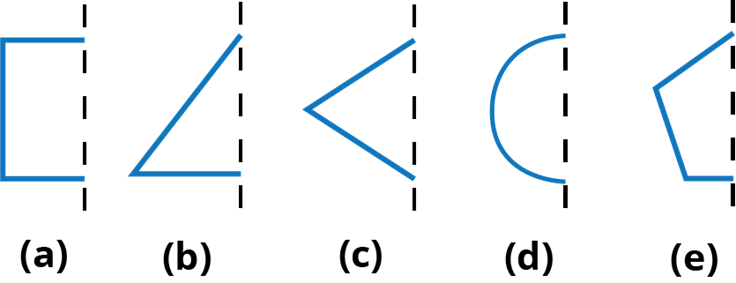
Ans:

Q.4. The following figures have more than one line of symmetry. Such figures are said to have multiple lines of symmetry.
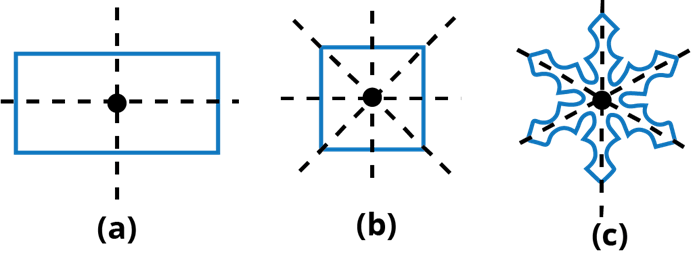
Identify multiple lines of symmetry, if any, in each of the following figures:
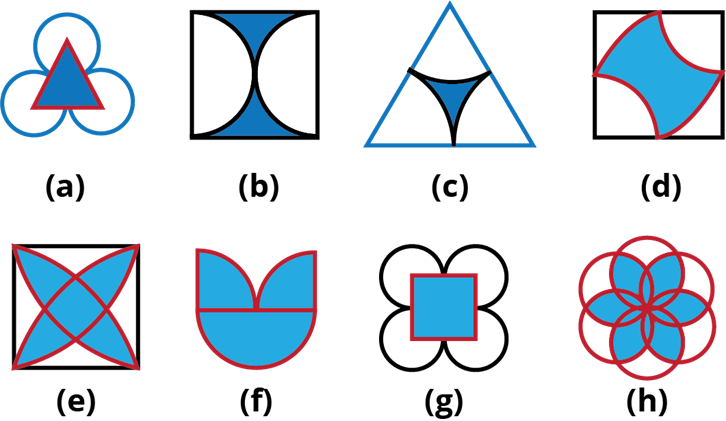
Ans:
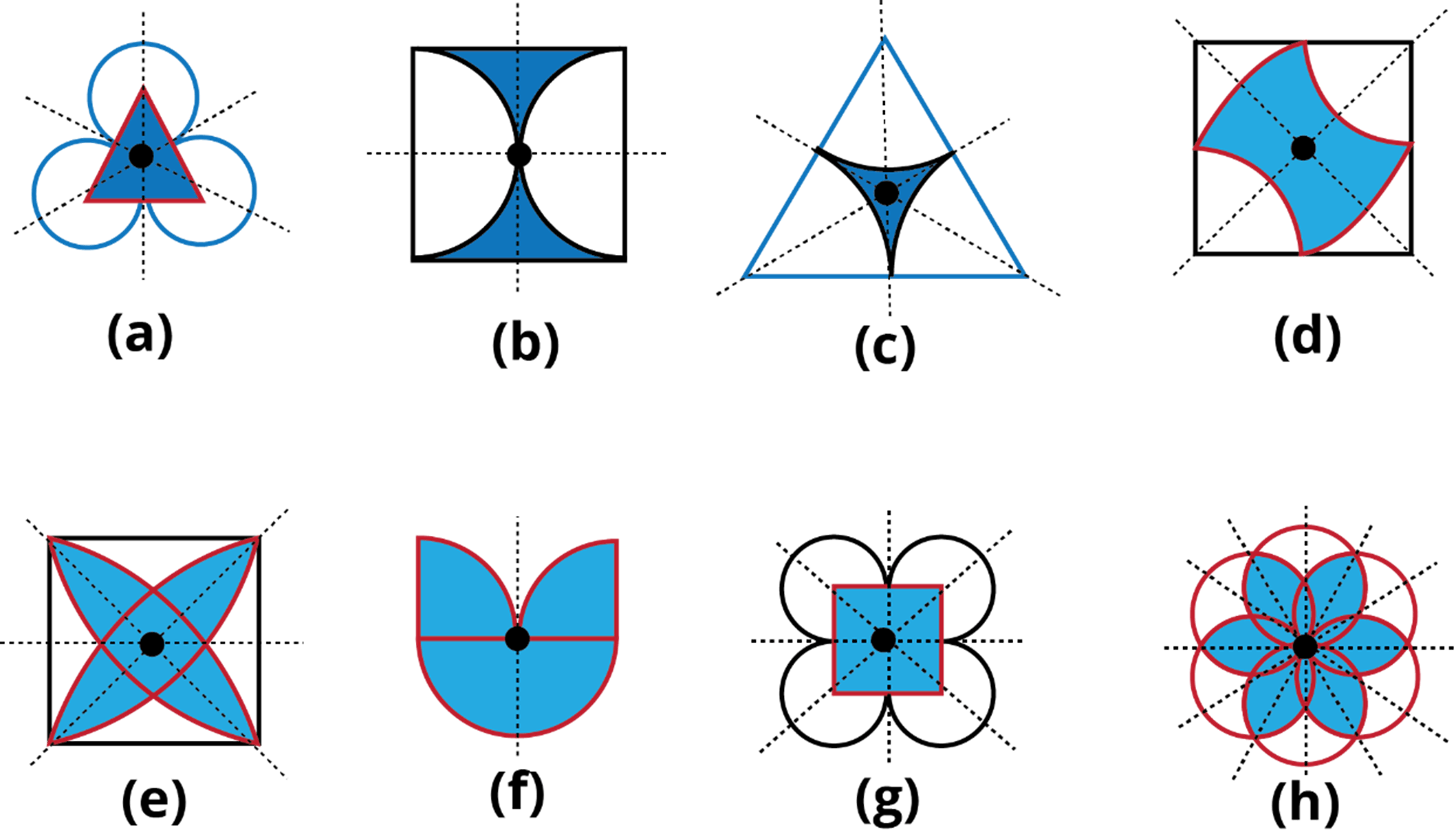
Q.5. Copy the figure given here.
Take any one diagonal as a line of symmetry and shade a few more squares to make the figure symmetric about a diagonal. Is there more than one way to do that? Will the figure be symmetric about both the diagonals?

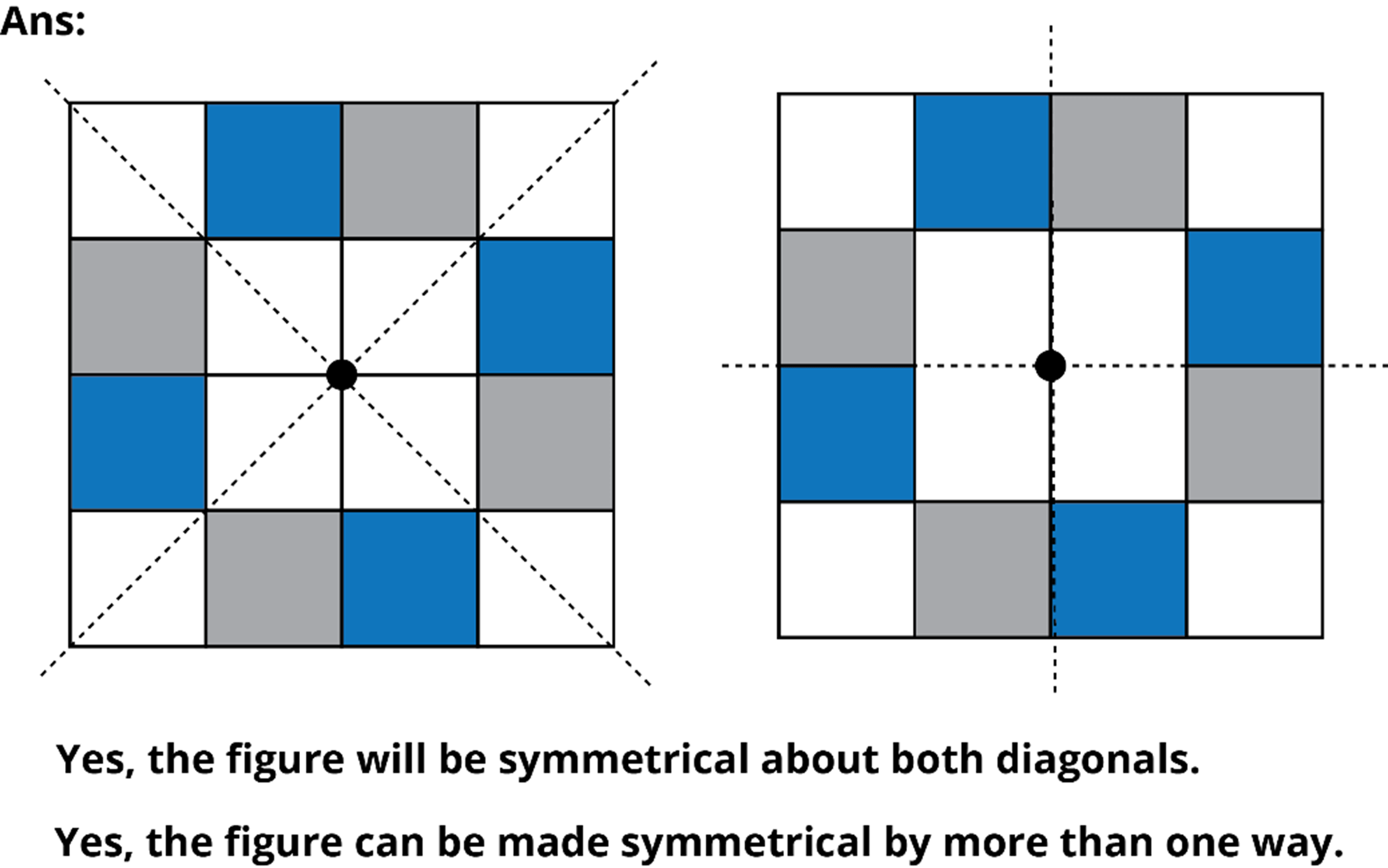
Q.6. Copy the diagram and complete each shape to be symmetric about the mirror line(s):
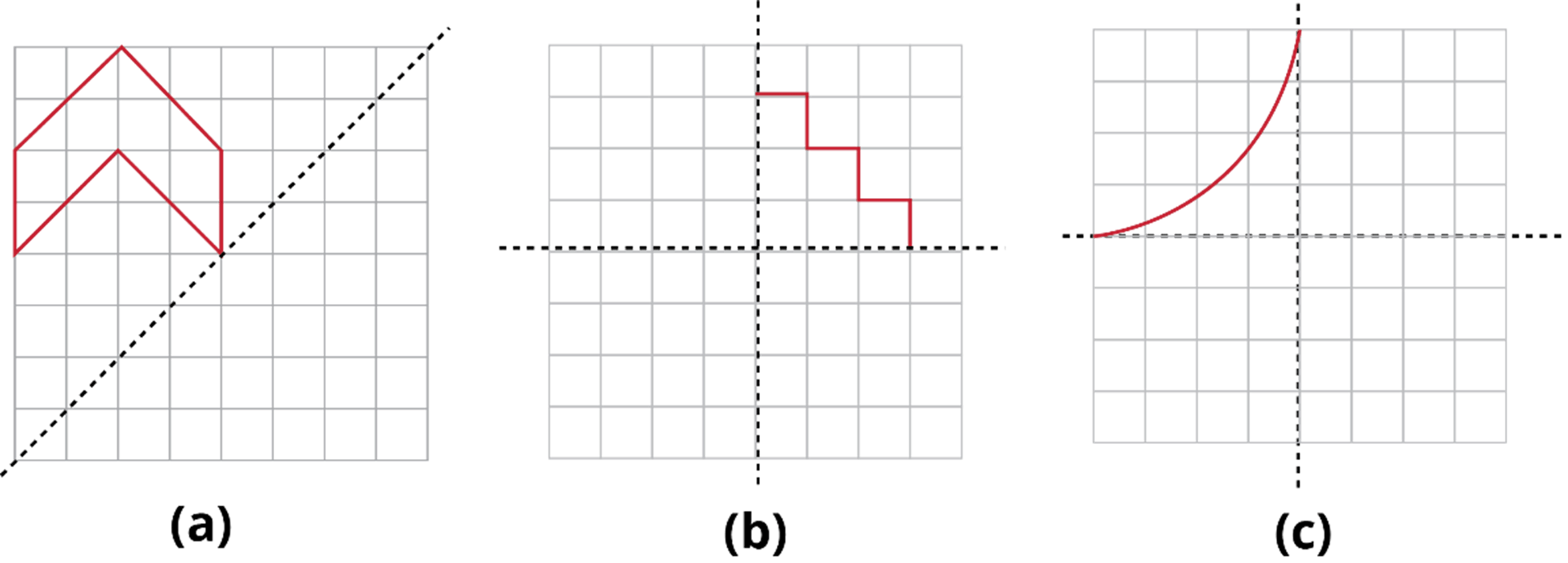
Ans:
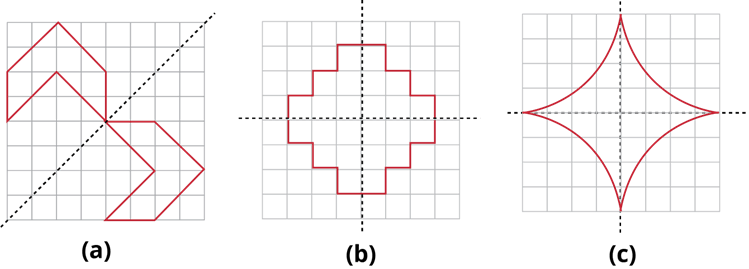
Q.7. State the number of lines of symmetry for the following figures:
(a) An equilateral triangle
(b) An isosceles triangle
(c) A scalene triangle
(d) A square
(e) A rectangle
(f) A rhombus
(g) A parallelogram
(h) A quadrilateral
(i) A regular hexagon
(j) A circle
Ans:
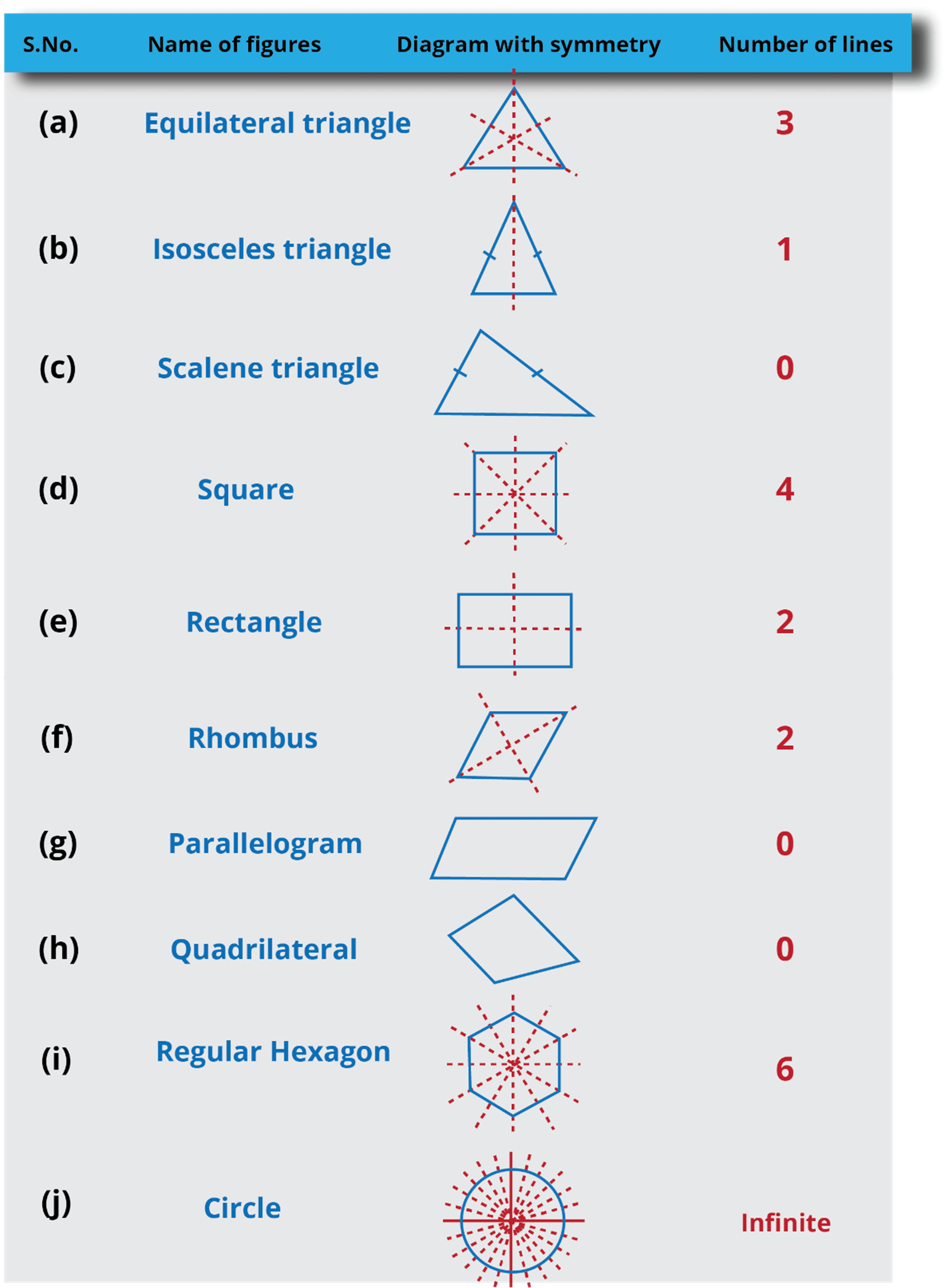
Q.8. What letters of the English alphabet have reflectional symmetry (i.e., symmetry related to mirror reflection) about.
(a) a vertical mirror
(b) a horizontal mirror
(c) both horizontal and vertical mirrors
Ans:
(a) A vertical mirror: The English alphabet have reflection symmetry about a vertical mirror are, A, H, I, M, O, T, U, V, W, X and Y.
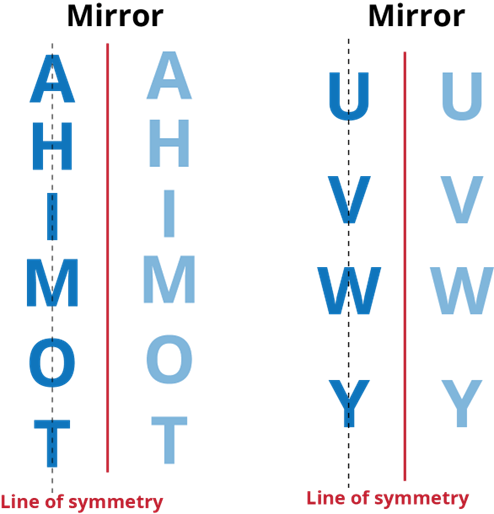
(b) A horizontal mirror: The English alphabet have reflection symmetry about a horizontal mirror are, B, C, D, E, H, I, K, O and X.

(c) Both horizontal and vertical mirrors: The English alphabet have reflection symmetry about both horizontal and vertical mirrors are, H, I, O and X.

Q.9. Give three examples of shapes with no line of symmetry.
Ans:
A shape has a no line of symmetry means if there is no line about which the figure may be folded and also parts of the figure will not coincide. The three examples are:
(a) Scalene triangle
(b) Quadrilateral
(c) Parallelogram

Q.10. What other name can you give to the line of symmetry of
(a) an isosceles triangle?
(b) a circle?
Ans:
(a) An isosceles triangle:
The other name to the line of symmetry of an isosceles triangle is median or altitude.
(b) A circle:
The other name to the line of symmetry of a circle is diameter.

